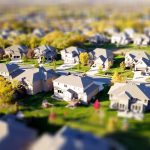Decoding Arborist Report Costs: Factors That Shape the Price
Are you considering a landscaping project that involves trees on your property? Odds are,you’ll find yourself in need of an arborist report to appraise tree health and give advice. Arborist report cost,But how much does an arborist report cost? In this article,we’ll delve into the factors influencing arborist report cost and provide you with a comprehensive understanding of what to expect.
The cost of an arborist report can vary widely depending on several factors such as the complexity of the project,the number of trees involved,and the location of the property. On average,you can expect to pay anywhere from $300 to $1,000 for a standard arborist report. Yet,for larger and more intricate undertakings,costs can climb to $2,000 or beyond.
The intricacy of the project is a pivotal determinant of arborist report expenses. Should the trees in question be mature,exhibit notable health concerns,or demand specialized care,the arborist’s evaluation will demand greater detail,thus increasing the cost. Furthermore,if your project entails trees located close to structures,power lines,or other obstructions,the arborist’s report will need to consider possible risks and safety protocols,an aspect that can also contribute to elevated costs.
Additionally,the quantity of trees implicated in your project is another fundamental element that impacts the cost of the arborist report. Arborists typically charge on a per-tree basis,with charges falling in the range of $50 to $100 per tree. This means that a project involving a larger number of trees will naturally incur higher costs. It’s worth mentioning that certain arborists might extend discounts for evaluating multiple trees,so make sure to inquire about potential opportunities for cost reduction.
The geographical location of your property also exerts influence over arborist report costs. In areas with a higher cost of living and greater demand for arborist services,you can expect to pay more for an arborist report. Conversely,in regions where the cost of living is lower and there is diminished demand for arborist services,the expense of an arborist report might be more budget-friendly.}
In summary,the cost of an arborist report varies widely depending on factors like project complexity,tree quantity,and property location. {While the average cost for a standard arborist report falls between $300 and $1,000,larger or more complex projects can lead to expenses of $2,000 or more.|Although the standard arborist report generally costs between $300 and $1,000,extensive or intricate projects can result in expenses exceeding $2,000.|While a standard arborist report typically ranges from $300 to $1,000,more extensive or intricate projects can result in costs surpassing $2





